#Cloud technology for developers
Explore tagged Tumblr posts
Text
Why Cloud Technology is Essential for Scalable Mobile Apps
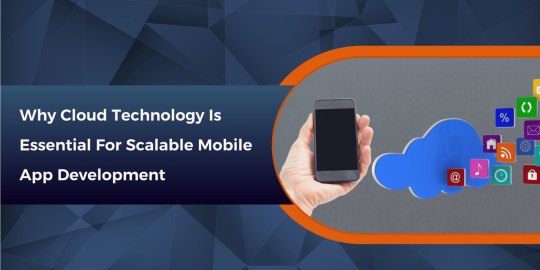
1. Introduction
As mobile applications continue to evolve and grow in popularity, ensuring their scalability becomes more critical than ever. The capacity to handle increasing loads and provide a seamless user experience is no longer just a technical challenge; it’s a business imperative. Cloud technology has emerged as a key solution to these challenges, offering the flexibility and resources necessary for scalable mobile app development. In this article, we’ll explore why cloud technology is essential for scalable mobile app development, with a focus on custom mobile app development in Saudi Arabia.
2. Understanding Cloud Technology
Cloud technology involves utilizing remote servers accessed online to store, manage, and process data, instead of depending on local servers or personal devices. It has revolutionized the way mobile applications are developed, offering a range of services that cater to the needs of developers and businesses alike.
2.1 Types of Cloud Services
Three primary cloud service models exist:
Infrastructure as a Service (IaaS): Offers virtual computing resources delivered over the internet. Developers can rent virtual machines, storage, and networks, allowing them to scale resources up or down as needed.
Platform as a Service (PaaS): Offers a platform for developers to build, deploy, and manage applications, easing the scaling process without the need to manage the underlying infrastructure.
Software as a Service (SaaS): Delivers software applications online on a subscription model. Users can access these applications via the web without managing the infrastructure or platform.
2.2 Benefits of Cloud Technology
Cloud technology offers numerous benefits that make it indispensable for modern mobile app development:
Scalability: Cloud services can quickly scale to accommodate increasing traffic or data loads, ensuring that apps remain responsive and efficient.
Flexibility: Developers can deploy and manage apps across multiple regions and platforms, providing users with consistent experiences regardless of location.
Cost-Efficiency: With pay-as-you-go pricing models, businesses can optimize costs by paying only for the resources they use, avoiding the need for significant upfront investments.
3. Importance of Scalability
Scalability is the ability of a mobile app to handle a growing number of users and transactions without compromising performance. In markets like Saudi Arabia, where mobile app usage is on the rise, scalability is crucial for maintaining user satisfaction and ensuring long-term success.
3.1 Challenges in Traditional Scaling
Traditional scaling methods, such as adding more physical servers or upgrading existing hardware, can be both expensive and time-consuming. They also often fail to provide the flexibility needed to adapt to sudden changes in demand, leading to performance issues and potential downtime.
4. Cloud Technology for Mobile App Scalability
Cloud technology addresses the limitations of traditional scaling by offering advanced tools and services that make it easier to scale mobile apps efficiently.
4.1 Elasticity and Auto-Scaling
Elasticity is a key feature of cloud computing, allowing resources to be automatically scaled up or down based on current demand. Auto-scaling ensures that mobile apps can handle traffic spikes without compromising performance, providing a seamless user experience.
4.2 Load Balancing and Traffic Management
Cloud-based load balancing distributes incoming traffic across multiple servers, preventing any single server from becoming overwhelmed. This not only improves app performance but also enhances its reliability and availability.
4.3 Data Management and Storage
Cloud services offer scalable data storage solutions that can accommodate vast amounts of data generated by mobile apps. These solutions are designed to be both secure and accessible, ensuring that app data is managed efficiently.
5. Custom Mobile App Development in Saudi Arabia
Saudi Arabia is experiencing rapid growth in mobile app usage, driven by a tech-savvy population and a strong economy. Custom mobile app development is essential for businesses looking to meet the specific needs of Saudi users and gain a competitive edge in the market.
5.1 Market Trends and Demands
The Saudi Arabian market is characterized by a high demand for innovative, user-friendly apps that cater to both consumers and businesses. As the government pushes for digital transformation under its Vision 2030 initiative, the demand for custom mobile apps is expected to increase significantly.
5.2 Considerations for Local Developers
Developers targeting the Saudi market must consider local preferences, cultural nuances, and regulatory requirements. Additionally, they must ensure that their apps are scalable to handle the growing number of users in the region.
6. Case Studies and Success Stories
To understand the impact of cloud technology on scalable mobile app development, we can look at successful case studies from around the world and within Saudi Arabia.
6.1 Global Case Study
An example of a global mobile app that successfully leveraged cloud technology for scalability is Netflix. By utilizing cloud services, Netflix can stream content to millions of users simultaneously, without interruptions or performance issues.
6.2 Saudi Arabian Case Study
In Saudi Arabia, the ride-hailing app Careem has become a success story by utilizing cloud technology to scale its operations. Careem’s cloud-based infrastructure allows it to handle millions of rides across the region, ensuring a smooth experience for both drivers and passengers.
7. Future Trends in Cloud and Mobile App Development
The future of mobile app development will be shaped by emerging trends in cloud technology, with a focus on enhancing scalability and user experience.
7.1 AI and Machine Learning in Cloud
Artificial Intelligence (AI) and Machine Learning (ML) are becoming increasingly integrated into cloud services, offering predictive analytics, personalized experiences, and improved decision-making capabilities. These technologies will play a critical role in enhancing the scalability of mobile apps.
7.2 The Rise of Edge Computing
Edge computing, which involves processing data closer to the source of data generation, is expected to revolutionize mobile app development. By reducing latency and improving real-time data processing, edge computing will enhance the scalability and performance of mobile apps.
8. Best Practices for Cloud Implementation
Successfully implementing cloud technology demands thorough planning and adherence to best practices, especially regarding scalability.
8.1 Security and Compliance
Ensuring data security and compliance with local regulations is paramount when using cloud services. Developers should implement robust security measures, such as encryption and multi-factor authentication, to protect app data.
8.2 Cost Management Strategies
Managing costs is a key concern for businesses using cloud services. By optimizing resource usage, leveraging cost management tools, and choosing the right pricing models, businesses can keep costs under control while scaling their apps.
9. Conclusion
Cloud technology has become essential for scalable mobile app development, offering the flexibility, efficiency, and resources needed to meet the demands of a growing user base. For businesses in Saudi Arabia, leveraging cloud services is key to staying competitive in a rapidly evolving market. By understanding the benefits and best practices associated with cloud technology, developers can create mobile apps that not only meet current demands but are also poised for future growth.
10. FAQs
Q1: What is cloud technology in mobile app development?Cloud technology involves utilizing remote servers accessed through the internet to store, manage, and process data. This enables mobile apps to scale efficiently and manage growing user demands.
Q2: Why is scalability important for mobile apps?Scalability ensures that a mobile app can handle an increasing number of users and transactions without compromising performance, which is crucial for maintaining a positive user experience.
Q3: How does cloud technology enhance app scalability?Cloud technology provides features like elasticity, auto-scaling, and load balancing, which allow mobile apps to scale dynamically in response to changing demand.
Q4: What are some challenges of traditional scaling methods? Traditional scaling methods, such as adding more physical servers, can be costly, time-consuming, and inflexible, making them less effective for modern mobile apps. Q5: What are the key considerations for developing custom mobile apps in Saudi Arabia? Developers should consider local market trends, user preferences, cultural nuances, and regulatory requirements, as well as ensuring their apps are scalable to handle growing demand.
#Cloud-based app development#Scalable mobile apps#Cloud computing in app development#Mobile app scalability#Cloud infrastructure for apps#App development in the cloud#Scalable application architecture#Cloud technology for developers#Mobile app performance with cloud#Cloud-native mobile apps#App development scalability solutions#Cloud services for app developers#Benefits of cloud for mobile apps#Cloud-enabled app growth#Cloud computing for scalable apps
1 note
·
View note
Text
Empower Your Digital Presence with Cutting-Edge Frameworks
In today’s fast-evolving digital landscape, staying ahead requires more than just a functional website or application—it demands innovation and efficiency. At Atcuality, we specialize in Website and Application Framework Upgrade solutions tailored to your business goals. Whether you're looking to optimize performance, enhance user experience, or integrate the latest technologies, our team ensures seamless upgrades that align with industry standards. Transitioning to advanced frameworks not only improves loading speeds and scalability but also strengthens your cybersecurity measures. With Atcuality, you gain access to bespoke services that future-proof your digital assets. Let us elevate your online platforms to a new realm of excellence.
#ai applications#artificial intelligence#ai services#website development#website developer near me#website developers#website developer in india#web development#web design#application development#app development#app developers#digital marketing#seo services#seo#emailmarketing#search engine marketing#search engine optimization#digital consulting#virtual reality#vr games#vr development#augmented reality#augmented and virtual reality market#cash collection application#task management#blockchain#metaverse#cloud computing#information technology
8 notes
·
View notes
Text

Kotlin 入門
#Kotlin基礎・入門#Android#cloud#cloudnative#Code#Developer#engineer#Flutter#Interoperability#Java#K8s#kotlin#Oracle#programming#Swift#technology#webアプリ#エンジニア#オープンソース#オラクル#クラウド#クラウドネイティブ#コード#ソフトウェア#ソフトウェア開発#テクノロジー#デベロッパー#デモ#プログラミング#モバイルアプリケーション
2 notes
·
View notes
Text
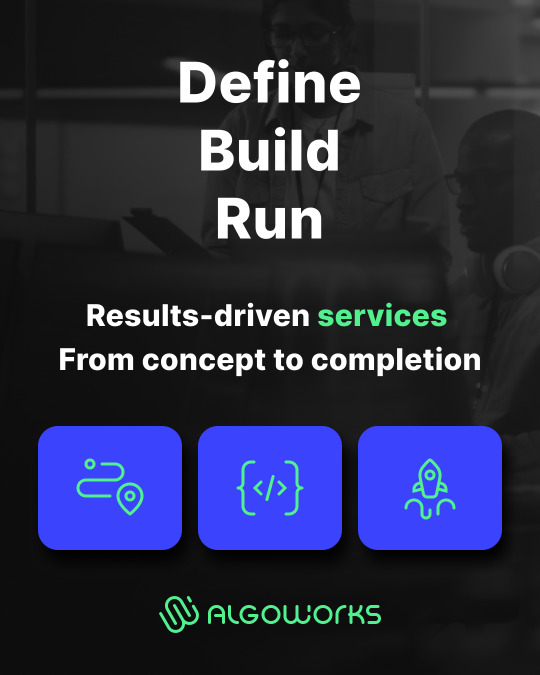
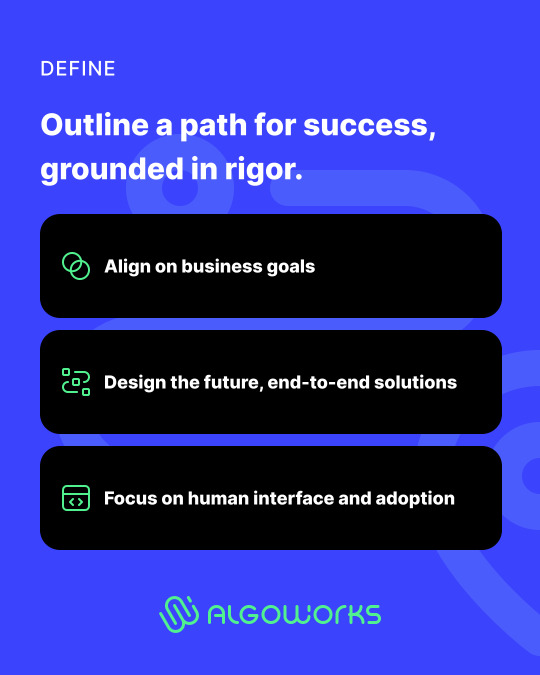

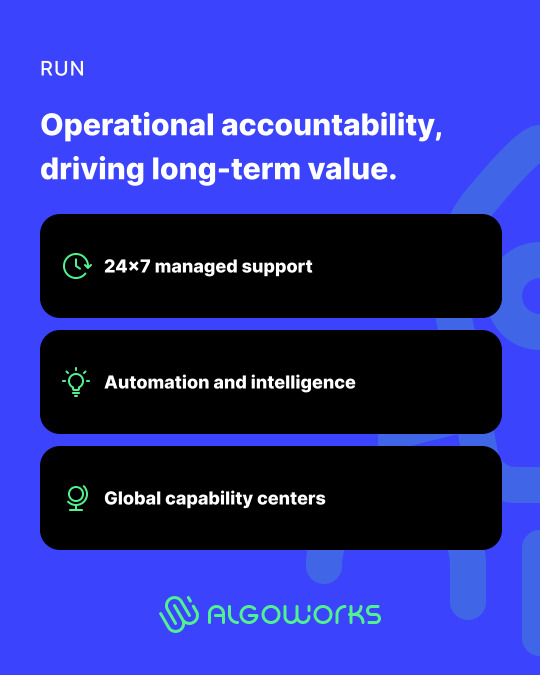
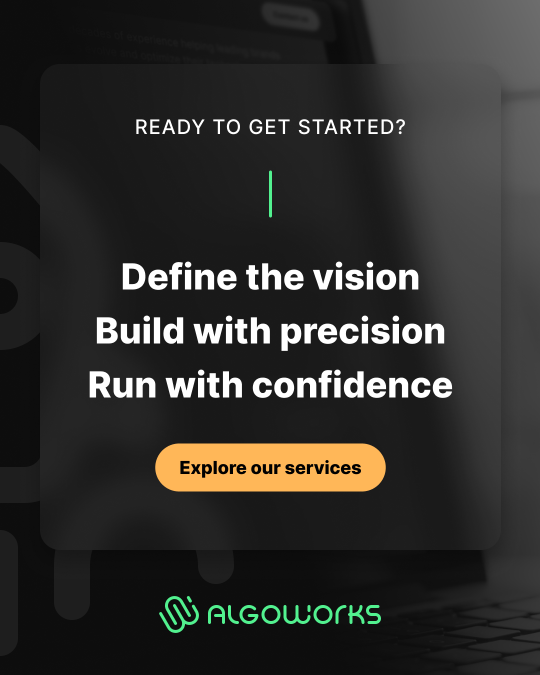
We follow our Define, Build, Run framework to execute flawlessly. From deep listening and 360° planning, to building with agile development and clean code, we ensure performance, security and return on investment through 24/7 monitoring and SLA-backed delivery.
Visit our website to learn more! https://www.algoworks.com/services/
#digital transformation#agile development#clean code#software engineering#cyber security#enterprise solutions#tech innovation#cloud services#innovations#technology#leadership#business excellence
2 notes
·
View notes
Text
Outsourcing in 2025: Why India is Leading the Way in the Tech Revolution

In 2025, the global business landscape is evolving at lightning speed, and outsourcing remains a pivotal factor in helping companies stay competitive, innovative, and cost-effective. While outsourcing has long been a key business strategy, India has solidified its position as the global leader in this space, especially in technology. As organizations worldwide turn to outsourced tech solutions to fuel their growth, Indian companies, especially those like IT Idol Technologie, are leading the charge by reshaping the future of the tech landscape.
Outsourcing in 2025: The Need for Agility, Efficiency, and Innovation
As businesses face the pressure of rapidly evolving markets, the need for flexibility, innovation, and efficiency has never been more crucial. Outsourcing allows organizations to tap into global talent pools, access specialized expertise, and scale faster than ever before. In 2025, companies are increasingly turning to outsourced partners to help them adapt to new challenges, innovate with cutting-edge technologies, and deliver results quickly and cost-effectively.
Outsourcing offers a multitude of benefits: businesses can reduce overhead costs, enhance operational efficiency, and gain access to top-tier talent without the complexities of recruitment and training. In the tech industry, these advantages are particularly significant, as companies look for ways to stay ahead of the curve without draining resources.
India: The Epicenter of Outsourcing Excellence

Why has India become the go-to destination for outsourcing? The answer lies in its unique combination of highly skilled talent, cost-effective services, and a growing tech ecosystem. India has long been the leader in IT outsourcing, but in 2025, it has taken that legacy to new heights. Indian companies are not only providing basic IT services but are now at the forefront of delivering cutting-edge tech solutions, from custom software development to cloud services, data engineering, and more.
With a vast pool of highly educated professionals and a robust tech ecosystem, India offers the perfect environment for businesses looking to leverage outsourcing in the tech space. Indian tech companies have evolved to meet the growing demand for more complex and specialized services, and this is where firms like IT Idol Technologies are making a significant impact.
IT Idol Technologies: Leading the Paradigm Shift in Tech Outsourcing

IT Idol Technologies is at the heart of this transformation. As a forward-thinking outsourcing partner, IT Idol is helping businesses navigate the challenges of the digital age by offering tailored tech solutions that drive growth and innovation. Whether it’s custom software development, mobile app development, cloud computing, or digital commerce, IT Idol Technologies is leading the way in delivering high-quality, scalable, and cost-effective services that enable businesses to stay competitive.
The key to IT Idol’s success lies in its deep understanding of the tech landscape and its ability to adapt to the unique needs of each client. By leveraging its expertise in emerging technologies and staying ahead of industry trends, IT Idol ensures that businesses can continue to innovate while benefiting from the efficiency and cost savings that outsourcing provides.
How IT Idol Technologies is Helping Businesses Thrive in 2025
In 2025, companies are looking for outsourcing partners who can offer more than just basic services—they need a strategic ally who can provide innovative solutions that drive growth. IT Idol Technologies offers just that, with its specialized focus on high-demand areas like:
Custom Software Solutions: Helping businesses build tailored software to optimize operations and solve complex problems.
Mobile App Development: Developing native and cross-platform apps that engage users and enhance customer experiences.
Cloud Computing: Enabling businesses to scale quickly, securely, and cost-effectively with cloud-based solutions.
Digital Commerce: Providing comprehensive e-commerce solutions that help businesses reach customers and increase sales.
IT Idol’s ability to combine technical expertise with a customer-centric approach makes it a standout partner for businesses looking to stay ahead of the competition.
Unlock the Power of Outsourcing with IT Idol Technologies
As outsourcing continues to be a driving force in the global tech landscape, India remains the leader, offering businesses the ability to access top-tier talent and innovative solutions. IT Idol Technologies is at the forefront of this shift, providing companies with the tools and expertise they need to thrive in 2025 and beyond.
Ready to take your business to the next level? Whether you need custom software, mobile apps, cloud computing, or digital commerce solutions, IT Idol Technologies is here to help. Contact us today to discover how we can help you leverage the power of outsourcing to accelerate growth and innovation in your business.
#artificial intelligence#it outsourcing#it idol technologies#custom software development company#custom software solutions#custom software development#mobile app development#cloud computin#digital commerce#IT services#coding
2 notes
·
View notes
Text
Immersive Learning: The Power of VR in Training - Atcuality
At Atcuality, we believe that learning should be as dynamic as the challenges you face. That’s why our VR-based training solutions are transforming how individuals and teams acquire new skills. With VR, we simulate real-life environments, enabling learners to practice, adapt, and succeed without the consequences of real-world mistakes. Our solutions are cost-effective, scalable, and highly engaging, making them ideal for industries like healthcare, construction, and corporate training. Experience the unmatched advantages of immersive technology and give your team the tools they need to excel. Step into the future of education with Atcuality.

#seo services#seo marketing#artificial intelligence#seo company#seo agency#ai powered application#digital marketing#azure cloud services#iot applications#amazon web services#augmented human c4 621#augmented reality agency#augmented and virtual reality market#augmented intelligence#augmented reality#ai applications#ai app development#ai generated#technology#virtual reality#digital services#web development#web design#web developers#web developing company#website development#cash collection application#blockchain#metaverse#wordpress
3 notes
·
View notes
Text
trying to focus on my(online, untimed) final exam but my head is full of hiveswap. what the hell do jadebloods do after exile.
#ooc#what structure does the alternian government have? do they have physical records stored on some kind of bookhiveship? bookhivestation?#planet?#where do trials take place?#where does his honourable tyrrany come in#are alternian doccuments (off planet i mean) all based in the cloud?#and by the cloud i mean kept in physical servers that are accessed via colony/warships remotely#in my head im imagining a station where helmsmen are maintained and exchanged or stored. stored helms powering the empire's data servers#uuuuu#helmspa. not that i think it would be very spalike#but i do like to imagine helmsmen getting unplugged and bathed and rested every once in a while#washed up by their helmsmechanics#i imagine the mechanics socialize between ships but i also imagine most helmsmen are too drained to do much socialization#ANYWAY none of this is necessarily canon to foly's timeline im just brainstorming#i think a massive data storage space station would be cool#weapons development also. scienterrorists developing new helming technology
3 notes
·
View notes
Text

The Comprehensive Guide to Web Development, Data Management, and More
Introduction
Everything today is technology driven in this digital world. There's a lot happening behind the scenes when you use your favorite apps, go to websites, and do other things with all of those zeroes and ones — or binary data. In this blog, I will be explaining what all these terminologies really means and other basics of web development, data management etc. We will be discussing them in the simplest way so that this becomes easy to understand for beginners or people who are even remotely interested about technology. JOIN US
What is Web Development?
Web development refers to the work and process of developing a website or web application that can run in a web browser. From laying out individual web page designs before we ever start coding, to how the layout will be implemented through HTML/CSS. There are two major fields of web development — front-end and back-end.
Front-End Development
Front-end development, also known as client-side development, is the part of web development that deals with what users see and interact with on their screens. It involves using languages like HTML, CSS, and JavaScript to create the visual elements of a website, such as buttons, forms, and images. JOIN US
HTML (HyperText Markup Language):
HTML is the foundation of all website, it helps one to organize their content on web platform. It provides the default style to basic elements such as headings, paragraphs and links.
CSS (Cascading Style Sheets):
styles and formats HTML elements. It makes an attractive and user-friendly look of webpage as it controls the colors, fonts, layout.
JavaScript :
A language for adding interactivity to a website Users interact with items, like clicking a button to send in a form or viewing images within the slideshow. JOIN US
Back-End Development
The difference while front-end development is all about what the user sees, back end involves everything that happens behind. The back-end consists of a server, database and application logic that runs on the web.
Server:
A server is a computer that holds website files and provides them to the user browser when they request it. Server-Side: These are populated by back-end developers who build and maintain servers using languages like Python, PHP or Ruby.
Database:
The place where a website keeps its data, from user details to content and settings The database is maintained with services like MySQL, PostgreSQL, or MongoDB. JOIN US
Application Logic —
the code that links front-end and back-end It takes user input, gets data from the database and returns right informations to front-end area.

Why Proper Data Management is Absolutely Critical
Data management — Besides web development this is the most important a part of our Digital World. What Is Data Management? It includes practices, policies and procedures that are used to collect store secure data in controlled way.
Data Storage –
data after being collected needs to be stored securely such data can be stored in relational databases or cloud storage solutions. The most important aspect here is that the data should never be accessed by an unauthorized source or breached. JOIN US
Data processing:
Right from storing the data, with Big Data you further move on to process it in order to make sense out of hordes of raw information. This includes cleansing the data (removing errors or redundancies), finding patterns among it, and producing ideas that could be useful for decision-making.
Data Security:
Another important part of data management is the security of it. It refers to defending data against unauthorized access, breaches or other potential vulnerabilities. You can do this with some basic security methods, mostly encryption and access controls as well as regular auditing of your systems.
Other Critical Tech Landmarks
There are a lot of disciplines in the tech world that go beyond web development and data management. Here are a few of them:
Cloud Computing
Leading by example, AWS had established cloud computing as the on-demand delivery of IT resources and applications via web services/Internet over a decade considering all layers to make it easy from servers up to top most layer. This will enable organizations to consume technology resources in the form of pay-as-you-go model without having to purchase, own and feed that infrastructure. JOIN US
Cloud Computing Advantages:
Main advantages are cost savings, scalability, flexibility and disaster recovery. Resources can be scaled based on usage, which means companies only pay for what they are using and have the data backed up in case of an emergency.
Examples of Cloud Services:
Few popular cloud services are Amazon Web Services (AWS), Microsoft Azure, and Google Cloud. These provide a plethora of services that helps to Develop and Manage App, Store Data etc.
Cybersecurity
As the world continues to rely more heavily on digital technologies, cybersecurity has never been a bigger issue. Protecting computer systems, networks and data from cyber attacks is called Cyber security.
Phishing attacks, Malware, Ransomware and Data breaches:
This is common cybersecurity threats. These threats can bear substantial ramifications, from financial damages to reputation harm for any corporation.
Cybersecurity Best Practices:
In order to safeguard against cybersecurity threats, it is necessary to follow best-practices including using strong passwords and two-factor authorization, updating software as required, training employees on security risks.
Artificial Intelligence and Machine Learning
Artificial Intelligence (AI) and Machine Learning (ML) represent the fastest-growing fields of creating systems that learn from data, identifying patterns in them. These are applied to several use-cases like self driving cars, personalization in Netflix.
AI vs ML —
AI is the broader concept of machines being able to carry out tasks in a way we would consider “smart”. Machine learning is a type of Artificial Intelligence (AI) that provides computers with the ability to learn without being explicitly programmed. JOIN US
Applications of Artificial Intelligence and Machine Learning: some common applications include Image recognition, Speech to text, Natural language processing, Predictive analytics Robotics.
Web Development meets Data Management etc.
We need so many things like web development, data management and cloud computing plus cybersecurity etc.. but some of them are most important aspects i.e. AI/ML yet more fascinating is where these fields converge or play off each other.
Web Development and Data Management
Web Development and Data Management goes hand in hand. The large number of websites and web-based applications in the world generate enormous amounts of data — from user interactions, to transaction records. Being able to manage this data is key in providing a fantastic user experience and enabling you to make decisions based on the right kind of information.
E.g. E-commerce Website, products data need to be saved on server also customers data should save in a database loosely coupled with orders and payments. This data is necessary for customization of the shopping experience as well as inventory management and fraud prevention.
Cloud Computing and Web Development
The development of the web has been revolutionized by cloud computing which gives developers a way to allocate, deploy and scale applications more or less without service friction. Developers now can host applications and data in cloud services instead of investing for physical servers.
E.g. A start-up company can use cloud services to roll out the web application globally in order for all users worldwide could browse it without waiting due unavailability of geolocation prohibited access.
The Future of Cybersecurity and Data Management
Which makes Cybersecurity a very important part of the Data management. The more data collected and stored by an organization, the greater a target it becomes for cyber threats. It is important to secure this data using robust cybersecurity measures, so that sensitive information remains intact and customer trust does not weaken. JOIN US
Ex: A healthcare provider would have to protect patient data in order to be compliant with regulations such as HIPAA (Health Insurance Portability and Accountability Act) that is also responsible for ensuring a degree of confidentiality between a provider and their patients.
Conclusion
Well, in a nutshell web-developer or Data manager etc are some of the integral parts for digital world.
As a Business Owner, Tech Enthusiast or even if you are just planning to make your Career in tech — it is important that you understand these. With the progress of technology never slowing down, these intersections are perhaps only going to come together more strongly and develop into cornerstones that define how we live in a digital world tomorrow.
With the fundamental knowledge of web development, data management, automation and ML you will manage to catch up with digital movements. Whether you have a site to build, ideas data to manage or simply interested in what’s hot these days, skills and knowledge around the above will stand good for changing tech world. JOIN US
#Technology#Web Development#Front-End Development#Back-End Development#HTML#CSS#JavaScript#Data Management#Data Security#Cloud Computing#AWS (Amazon Web Services)#Cybersecurity#Artificial Intelligence (AI)#Machine Learning (ML)#Digital World#Tech Trends#IT Basics#Beginners Guide#Web Development Basics#Tech Enthusiast#Tech Career#america
6 notes
·
View notes
Text
Your Guide to B.Tech in Computer Science & Engineering Colleges

In today's technology-driven world, pursuing a B.Tech in Computer Science and Engineering (CSE) has become a popular choice among students aspiring for a bright future. The demand for skilled professionals in areas like Artificial Intelligence, Machine Learning, Data Science, and Cloud Computing has made computer science engineering colleges crucial in shaping tomorrow's innovators. Saraswati College of Engineering (SCOE), a leader in engineering education, provides students with a perfect platform to build a successful career in this evolving field.
Whether you're passionate about coding, software development, or the latest advancements in AI, pursuing a B.Tech in Computer Science and Engineering at SCOE can open doors to endless opportunities.
Why Choose B.Tech in Computer Science and Engineering?
Choosing a B.Tech in Computer Science and Engineering isn't just about learning to code; it's about mastering problem-solving, logical thinking, and the ability to work with cutting-edge technologies. The course offers a robust foundation that combines theoretical knowledge with practical skills, enabling students to excel in the tech industry.
At SCOE, the computer science engineering courses are designed to meet industry standards and keep up with the rapidly evolving tech landscape. With its AICTE Approved, NAAC Accredited With Grade-"A+" credentials, the college provides quality education in a nurturing environment. SCOE's curriculum goes beyond textbooks, focusing on hands-on learning through projects, labs, workshops, and internships. This approach ensures that students graduate not only with a degree but with the skills needed to thrive in their careers.
The Role of Computer Science Engineering Colleges in Career Development
The role of computer science engineering colleges like SCOE is not limited to classroom teaching. These institutions play a crucial role in shaping students' futures by providing the necessary infrastructure, faculty expertise, and placement opportunities. SCOE, established in 2004, is recognized as one of the top engineering colleges in Navi Mumbai. It boasts a strong placement record, with companies like Goldman Sachs, Cisco, and Microsoft offering lucrative job opportunities to its graduates.
The computer science engineering courses at SCOE are structured to provide a blend of technical and soft skills. From the basics of computer programming to advanced topics like Artificial Intelligence and Data Science, students at SCOE are trained to be industry-ready. The faculty at SCOE comprises experienced professionals who not only impart theoretical knowledge but also mentor students for real-world challenges.
Highlights of the B.Tech in Computer Science and Engineering Program at SCOE
Comprehensive Curriculum: The B.Tech in Computer Science and Engineering program at SCOE covers all major areas, including programming languages, algorithms, data structures, computer networks, operating systems, AI, and Machine Learning. This ensures that students receive a well-rounded education, preparing them for various roles in the tech industry.
Industry-Relevant Learning: SCOE’s focus is on creating professionals who can immediately contribute to the tech industry. The college regularly collaborates with industry leaders to update its curriculum, ensuring students learn the latest technologies and trends in computer science engineering.
State-of-the-Art Infrastructure: SCOE is equipped with modern laboratories, computer centers, and research facilities, providing students with the tools they need to gain practical experience. The institution’s infrastructure fosters innovation, helping students work on cutting-edge projects and ideas during their B.Tech in Computer Science and Engineering.
Practical Exposure: One of the key benefits of studying at SCOE is the emphasis on practical learning. Students participate in hands-on projects, internships, and industry visits, giving them real-world exposure to how technology is applied in various sectors.
Placement Support: SCOE has a dedicated placement cell that works tirelessly to ensure students secure internships and job offers from top companies. The B.Tech in Computer Science and Engineering program boasts a strong placement record, with top tech companies visiting the campus every year. The highest on-campus placement offer for the academic year 2022-23 was an impressive 22 LPA from Goldman Sachs, reflecting the college’s commitment to student success.
Personal Growth: Beyond academics, SCOE encourages students to participate in extracurricular activities, coding competitions, and tech fests. These activities enhance their learning experience, promote teamwork, and help students build a well-rounded personality that is essential in today’s competitive job market.
What Makes SCOE Stand Out?
With so many computer science engineering colleges to choose from, why should you consider SCOE for your B.Tech in Computer Science and Engineering? Here are a few factors that make SCOE a top choice for students:
Experienced Faculty: SCOE prides itself on having a team of highly qualified and experienced faculty members. The faculty’s approach to teaching is both theoretical and practical, ensuring students are equipped to tackle real-world challenges.
Strong Industry Connections: The college maintains strong relationships with leading tech companies, ensuring that students have access to internship opportunities and campus recruitment drives. This gives SCOE graduates a competitive edge in the job market.
Holistic Development: SCOE believes in the holistic development of students. In addition to academic learning, the college offers opportunities for personal growth through various student clubs, sports activities, and cultural events.
Supportive Learning Environment: SCOE provides a nurturing environment where students can focus on their academic and personal growth. The campus is equipped with modern facilities, including spacious classrooms, labs, a library, and a recreation center.
Career Opportunities After B.Tech in Computer Science and Engineering from SCOE
Graduates with a B.Tech in Computer Science and Engineering from SCOE are well-prepared to take on various roles in the tech industry. Some of the most common career paths for CSE graduates include:
Software Engineer: Developing software applications, web development, and mobile app development are some of the key responsibilities of software engineers. This role requires strong programming skills and a deep understanding of software design.
Data Scientist: With the rise of big data, data scientists are in high demand. CSE graduates with knowledge of data science can work on data analysis, machine learning models, and predictive analytics.
AI Engineer: Artificial Intelligence is revolutionizing various industries, and AI engineers are at the forefront of this change. SCOE’s curriculum includes AI and Machine Learning, preparing students for roles in this cutting-edge field.
System Administrator: Maintaining and managing computer systems and networks is a crucial role in any organization. CSE graduates can work as system administrators, ensuring the smooth functioning of IT infrastructure.
Cybersecurity Specialist: With the growing threat of cyberattacks, cybersecurity specialists are essential in protecting an organization’s digital assets. CSE graduates can pursue careers in cybersecurity, safeguarding sensitive information from hackers.
Conclusion: Why B.Tech in Computer Science and Engineering at SCOE is the Right Choice
Choosing the right college is crucial for a successful career in B.Tech in Computer Science and Engineering. Saraswati College of Engineering (SCOE) stands out as one of the best computer science engineering colleges in Navi Mumbai. With its industry-aligned curriculum, state-of-the-art infrastructure, and excellent placement record, SCOE offers students the perfect environment to build a successful career in computer science.
Whether you're interested in AI, data science, software development, or any other field in computer science, SCOE provides the knowledge, skills, and opportunities you need to succeed. With a strong focus on hands-on learning and personal growth, SCOE ensures that students graduate not only as engineers but as professionals ready to take on the challenges of the tech world.
If you're ready to embark on an exciting journey in the world of technology, consider pursuing your B.Tech in Computer Science and Engineering at SCOE—a college where your future takes shape.
#In today's technology-driven world#pursuing a B.Tech in Computer Science and Engineering (CSE) has become a popular choice among students aspiring for a bright future. The de#Machine Learning#Data Science#and Cloud Computing has made computer science engineering colleges crucial in shaping tomorrow's innovators. Saraswati College of Engineeri#a leader in engineering education#provides students with a perfect platform to build a successful career in this evolving field.#Whether you're passionate about coding#software development#or the latest advancements in AI#pursuing a B.Tech in Computer Science and Engineering at SCOE can open doors to endless opportunities.#Why Choose B.Tech in Computer Science and Engineering?#Choosing a B.Tech in Computer Science and Engineering isn't just about learning to code; it's about mastering problem-solving#logical thinking#and the ability to work with cutting-edge technologies. The course offers a robust foundation that combines theoretical knowledge with prac#enabling students to excel in the tech industry.#At SCOE#the computer science engineering courses are designed to meet industry standards and keep up with the rapidly evolving tech landscape. With#NAAC Accredited With Grade-“A+” credentials#the college provides quality education in a nurturing environment. SCOE's curriculum goes beyond textbooks#focusing on hands-on learning through projects#labs#workshops#and internships. This approach ensures that students graduate not only with a degree but with the skills needed to thrive in their careers.#The Role of Computer Science Engineering Colleges in Career Development#The role of computer science engineering colleges like SCOE is not limited to classroom teaching. These institutions play a crucial role in#faculty expertise#and placement opportunities. SCOE#established in 2004#is recognized as one of the top engineering colleges in Navi Mumbai. It boasts a strong placement record
2 notes
·
View notes
Text
#theintellify#mobile application development#web application development#cloud consulting services#augmented reality#virtual reality#ar vr technology#arvr#ar vr development company#ar vr development services
2 notes
·
View notes
Text
Google Cloud Professional Cloud Architect Certification. Become a GCP Cloud Architect, Latest GCP Exam and Case Studies.
Google Cloud Platform is one of the fastest-growing cloud service platforms offered today that lets you run your applications and data workflows at a 'Google-sized' scale.
Google Cloud Certified Professional Cloud Architect certification is one of the most highly desired IT certifications out today. It is also one of the most challenging exams offered by any cloud vendor today. Passing this exam will take many hours of study, hands-on experience, and an understanding of a very wide range of GCP topics.
Luckily, we're here to help you out! This course is designed to be your best single resource to prepare for and pass the exam to become a certified Google Cloud Architect.
Why should do a Google Cloud Certification?
Here are few results from Google's 2020 Survey:
89% of Google Cloud certified individuals are more confident about their cloud skills
GCP Cloud Architect was the highest paying certification of 2020 (2) and 2019 (3)
More than 1 in 4 of Google Cloud certified individuals took on more responsibility or leadership roles at work
Why should you aim for Google Cloud - GCP Cloud Architect Certification?
Google Cloud Professional Cloud Architect certification helps you gain an understanding of cloud architecture and Google Cloud Platform.
As a Cloud Architect, you will learn to design, develop, and manage robust, secure, scalable, highly available, and dynamic solutions to drive business objectives.
The Google Cloud Certified - Professional Cloud Architect exam assesses your ability to:
Design and architect a GCP solution architecture
Manage and provision the GCP solution infrastructure
Design for security and compliance
Analyze and optimize technical and business processes
Manage implementations of Google Cloud architecture
Ensure solution and operations reliability
Are you ready to get started on this amazing journey to becoming a Google Cloud Architect?
So let's get started!
Who this course is for:
You want to start your Cloud Journey with Google Cloud Platform
You want to become a Google Cloud Certified Professional Cloud Architect
#googlecloud#aws#cloud#cloudcomputing#azure#google#googlepixel#technology#machinelearning#awscloud#devops#bigdata#python#coding#googlecloudplatform#cybersecurity#gcp#developer#microsoft#linux#datascience#tech#microsoftazure#programming#amazonwebservices#amazon#software#pixel#xl#azurecloud
5 notes
·
View notes
Text
Cloud hosting solution
Our cloud hosting solutions provide reliable and high-performing servers for your enterprise's success.
Experience fast loading times and secure data storage with our cloud hosting.
Ensure a seamless consumer experience for your website or application.
Our cloud hosting solutions utilize the latest technology for maximum uptime and scalability.
Your website or utility will always be available to your customers, regardless of visitor numbers or data processing.
Easily upgrade your cloud hosting plan as your business grows without any disruptions your operation.
Our cloud web hosting offers snapshot backups and advanced security features for data protection.
We are dedicated to enhancing your cloud hosting experience and ensuring your satisfaction.
Choose Bsoftindia for reliable, high-performing, and secure cloud web hosting services.
Sign up today at https://bsoft.co.in/cloud-demo/ to enjoy the control of cloud hosting with Bsoftindia.
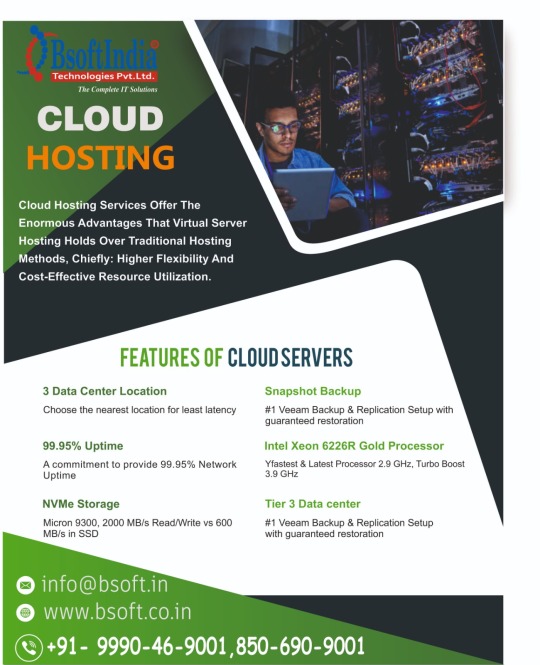
#clouds#technology#cloud hosting#cloud services#city#branding#cloudserver#black tumblr#citazione#my post#development#cybersecurity#blog#cloud computing
2 notes
·
View notes
Text
Elevate Your Website’s Security with WordPress Security Services
Your WordPress website is a valuable asset that deserves top-tier protection. At Atcuality, we provide comprehensive WordPress security services to safeguard your site from cyberattacks and data breaches. Our team starts with an in-depth analysis of your website’s security framework, identifying and addressing vulnerabilities. We implement state-of-the-art measures such as malware scanning, brute force protection, and database encryption to enhance your site’s security posture. Additionally, we offer ongoing maintenance and support to ensure your site remains secure over time. With Atcuality, your website is not only protected but optimized for performance. Trust us to keep your digital assets safe and help you maintain a competitive edge in the online world.
#wordpress#website#web development#web design#web developing company#website development#web developers#ai generated#artificial intelligence#ai applications#iot#iot applications#iot development services#iotsolutions#iot platform#digitaltransformation#technologynews#techinnovation#augmented reality#augmented human c4 621#augmented and virtual reality market#augmented intelligence#metaverse#virtual reality#ar vr technology#amazon services#cloud server hosting#ssl#sslcertificate#ssl certificates
2 notes
·
View notes
Text
Powered by : Aequitas Infotech Pvt. Ltd.
Our website: https://aequitasindia.com/
Follow us on...
LinkedIn: https://www.linkedin.com/company/aequitas-infotech-private-limited/
Twitter (X): https://twitter.com/AequitasInfotec
Facebook: https://www.facebook.com/profile.php?id=61550565488254
Instagram: https://www.instagram.com/aequitas_infotech/
#software development#software company#seo services#software#digitalmarketing#technology#cloud computing#cloud software#modern software#Aequitas InfoTech
3 notes
·
View notes
Text
Engineer Excellence with STERP: Premier ERP Software Providers in Ahmedabad, India
Elevate your engineering business to new heights with ShantiTechnology - the trusted ERP Software Providers in Ahmedabad. Our cutting-edge solutions are tailored for Engineering Companies in India, empowering your industry-specific needs. Revolutionize your operations and efficiency with the finest ERP Software for the Engineering Industry. ShantiTechnology, your trusted ERP solution providers, offer cutting-edge solutions designed for the unique needs of the engineering industry. Transform the way you manage projects, resources, and finances with ShantiTechnology's ERP software. Our tailored ERP solutions redefine efficiency, transparency, and productivity for the engineering industry.
Choose innovation, choose ShantiTechnology – your dedicated ERP Solution Providers in India.
#ERP Software Providers in Ahmedabad#ERP Software for Engineering Companies#ERP Software for Engineering Companies in India#ERP Software for Engineering Industry#ERP solutions providers in Ahmedabad#ERP India#Supply Chain Management#Go-To-Market#ERP software#technology#India#ERP system#cloud ERP#ERP solutions#software development#manufacturer#engineering#Ahmedabad
6 notes
·
View notes
Text
Product Engineering in Software Engineering: Latest Trends
Explore how Product Engineering in Software Engineering drives innovation with AI, cloud, low-code, and modern development trends.
Building digital products today requires more than just good code. As a result, companies are shifting to smarter product development methods. As businesses strive to meet rising customer expectations, they often seek help from a software product engineering services company.
These companies combine technology, design, and strategy to bring innovation faster and more reliably.
Therefore, let’s explore how product engineering in software engineering is evolving and what trends are shaping its future.
Why Product Engineering in Software Engineering Drives Modern Products
The idea behind product engineering in software engineering is to build digital products that solve real problems quickly and efficiently. Rather than creating products in silos, teams now work together using shared goals, fast feedback, and constant iteration.
Continuous Discovery
First of all, product teams no longer wait months to understand customer needs. Instead, they perform weekly research sprints to validate every new idea. These discoveries reduce rework and help create user-focused solutions from day one. Furthermore, continuous discovery aligns the product vision with real-time market shifts.
Secure by Design
In the past, security was a final step in the product life cycle. Now, developers integrate security scans into their daily coding process. This proactive approach prevents threats and saves time on future fixes. Additionally, building security from the start improves trust and reduces compliance risks………….
#Product Engineering in Software Engineering#Software Product Engineering Services#AI in Product Development#Low-Code Development#Cloud Product Engineering#Edge Computing Trends#Composable Architecture#Responsible AI#Hyper-Personalization#Sustainable DevOps#Digital Product Innovation#Future Skills for Product Teams#Cloud-Native Security#Continuous Discovery#Irom Technologies
0 notes